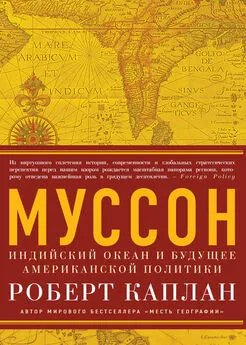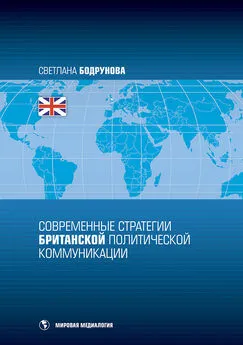Светлана Сидорова - Индийский хлопок и британский интерес. Овеществленная политика в колониальную эпоху
- Название:Индийский хлопок и британский интерес. Овеществленная политика в колониальную эпоху
- Автор:
- Жанр:
- Издательство:Литагент Нестор-История
- Год:2016
- Город:Москва, Санкт-Петербург
- ISBN:978-5-4469-0839-4
- Рейтинг:
- Избранное:Добавить в избранное
-
Отзывы:
-
Ваша оценка:
Светлана Сидорова - Индийский хлопок и британский интерес. Овеществленная политика в колониальную эпоху краткое содержание
Индийский хлопок и британский интерес. Овеществленная политика в колониальную эпоху - читать онлайн бесплатно ознакомительный отрывок
Интервал:
Закладка:
Тэйлор 1975 – Taylor R. Lord Salisbury . L.: Allen Lane.
Уиллс 1926 – Wills C. U. British Relations with the Nagpur State in the XVIIIth Century. An Account, Mainly Based on Contemporary English Records . Nagpur: Central Provinces Government Press.
Уильямсон 1846 – Williamson Thomas. Two Letters on the Advantages of Railway Communication in Western India . L.: Richard and John E. Taylor.
Улрих, Гаскелл и др. 2015 – Ulrich Laurel Thatcher, Gaskell Ivan, Schechner Sara, Carter Sarah Anne, Gerbig Samantha van. Tangible Things: Making History through Objects . N. Y.: Oxford University Press.
Уоттс 1871 – Watts I. Cotton Supply Association: Its Origin and Progress . Manchester: Tubs & Brook.
Уэбстер 1990 – Webster Anthony. The Political Economy of Trade Liberalization: The East India Company Charter Act of 1813 // The Economic History Review . New Series. Vol. 43, no. 3.
Фарни, Джереми 2004 – Farnie Douglas, Jeremy David. The Fibre that Changed the World: The Cotton Industry in International Perspective, 1600–1990s . Oxford: Oxford University Group/Pasold Research Fund.
Филипс 1962 – Philips C. H. (ed.) The Evolution of India and Pakistan, 1858–1947. Select Documents on the History of India and Pakistan . L.: Oxford University Press.
Фиттон 1989 – Fitton R. S. The Arkwrights: Spinners of Fortune . Manchester: Manchester University Press.
Форстер 1798 – Forster George. A Journey from Bengal to England, through the Northern Part of India, Kashmire, Afganistan, and Persia, and into Russia, by Caspean-sea . 2 vols. L.: Printed for R. Faulder.
Хабиб 2007 – Habib Irfan. Colonization of the Indian Economy 1757–1900 // Habib Irfan. Essays in Indian History. Towards a Marxist Perception . N. D.: Tulika Books.
Хазарисингх 2012 – Hazareesingh Sandip. Cotton, Climate and Colonialism in Dhar-war, Western India, 1840–1880 // Journal of Historical Geography . Vol. 38, no. 1.
Хант 2003 – Hunt E. K. Property and Prophets: The Evolution of Economic Institutions and Ideologies . USA: M. E. Sharpe, Inc.
Хантер 1881 – Hunter W. W. The Imperial Gazetteer of India . Vol. II. L.: Trubner & Co.
Хантер 1885–1886 – Hunter W. W. Imperial Gazetteer of India . Vols. 2–14. L.: Trubner & Co.
Харли 2001 – Harley J. B. The New Nature of Maps: Essays in the History of Cartography . Baltimore; London: The Johns Hopkins University Press.
Харнетти 1971 – Harnetty P. Cotton Exports and Indian Agriculture, 1861–1870 // Economic History Review . Vol. 24, no. 3.
Харнетти 1972 – Harnetty P. Imperialism and Free Trade: Lancashire and India in the Mid-nineteenth Century . Manchester: Manchester University Press.
Харнетти 1977 – Harnetty P. Crop tends in the Central Provinces of India, 1861–1921 // Modern Asian Studies . Vol. 11, no. 3.
Харнетти 1991 – Harnetty P. „Deindustrialization“ Revisited: The Handloom Weavers of the Central Provinces of India, c. 1800–1947 // Modern Asian Studies . Vol. 25, no. 3.
Харрис 1923 – Harris D. G. Irrigation in India . L.: Oxford University Press.
Хикс, Бодри 2010 – Hicks Dan, Beaudry Mary (eds). The Oxford Handbook of Material Culture Studies . Oxford: Oxford University Press.
Хилтон-Браун 2015 – Хилтон-Браун Чарлз. Почтовая станция или Дак-бунгало // Глушкова И. П. (рук. проекта), Сидорова С. Е. (отв. ред.) Под небом Южной Азии. Движение и пространство: парадигма мобильности и поиски смыслов за пределами статичности . М.: Наука – Восточная литература.
Хобсбаум 1999 – Hobsbaum Eric. Industry and Empire: From 1750 to the Present . L.: Penguin Books.
Хоссейн 1996 – Hossain Hameeda. The Alienation of Weavers: Impact of the Conflict Between the Revenue and Commercial Interests of the East India Company, 1750–1800 // Roy Tirthankar (ed.) Cloth and Commerce: Textiles in Colonial India . N. D.: Sage Publications.
Хоуп 1900 – Hope Elizabeth. General Sir Arthur Cotton, R. E., K. C. S. I.; His Life and Work . L.: Hodder & Stoughton.
Чаудхури 1978 – Chaudhuri K. N. The Trading World of Asia and the English East India Company, 1660–1760 . Cambridge: Cambridge University Press.
Чесни 1870 – Chesney G. Indian Polity: A View of the System of Administration in India . L.: Longman, Green, and Co.
Чэпмен 1851 – Chapman John. The Cotton and Commerce of India, Considered in Relation to the Interests of Great Britain; with Remarks on Railway communication in the Bombay Presidency . L.: John Chapman.
Шривастава 1979 – Srivastava Dharma Bhanu. The Province of Agra: Its History and Administration . N. D.: Concept Publishing Company.
Эйтчисон 1897 – Aitchison Ch. Lord Lawrence and the Reconstruction of India under the Crown . Oxford.
Эйтчисон 1909 – Aitchison C. U. (compiled by). A Collection of Treaties, Engagements and Sanads Relating to India and Neighbouring Counties . Vol. I. Calcutta: Superintendent Government Printing.
Эллиот 1922 – Elliot E. K. Memorandum by Colonel E. K. Elliot, Commissioner, Nagpore, dated the 18th February 1861, Proposing the Amalgamation of the Jubbulpore Division of the Province of Nagpore, and the Government of India, Foreign Department, Resolution No. 9, dated the 2nd November 1861, Sanctioning the Proposal . Nagpur: Ofifce of the Commissioner.
Юл, Бернелл 1996 – Yule Henry, Burnell A. C. Hobson-Jobson. The Anglo-Indian Dictionary . Great Britain: Mackeys of Chatham.
Яфа 2006 – Yafa Stephen. Cotton: The Biography of a Revolutionary Fiber . N. Y.: Penguin Group.
Яфа 2004 – Yafa Stephen. Big Cotton: How A Humble Fiber Created Fortunes, Wrecked
Civilizations, and Put America on the Map . N. Y.: Penguin Group.
Indian Cotton and British Involvement
Materiality of Colonial Politics
The book “ Indian Cotton and British Involvement: Materiality of Colonial Politics ” focuses on more than a century-long history (1750–1870) of a Central Indian region throughout its transition from the first contacts of European visitors with the Nagpur State until the appropriation of these lands by the British. The establishment of political and economic dominance of an alien culture is discussed in terms of materiality. The main object of the study is cotton, one of the principal Central Indian crops and also the most important colonial commodity of the industrial revolution era. Commercial interest in cotton resulted in territorial claims by British business circles and colonial authorities, defined the vectors and substance of their economic activities, geopolitical decisions, trajectories of their mobility and goods’ flows, as well as newly formed territorial borders. In the book, cotton is viewed as a generalized symbol of other colonial things that embodied the British culture and its domination over colonial space. A detailed review of the colonial practices relating to things reveals methods of, opportunities for, and limitations of mutual impact of the local and foreign cultures, mechanisms of their mutual adaptation and rejection, their modernization and conservation at the time when they coexisted and overlapped.
As the British advanced further into the territory of Central India and learned what for and how these lands could be used, the number of the British settlers grew, they tended to stay longer, engaged in business activities, and assumed the reins of power. As a result, their material presence spread and became more visible: isolated bungalows transformed into “white” residential and commercial areas with governmental buildings; few dispersed graves gave way to European cemeteries; roads and railroads were built and telegraph cables were laid, forming infrastructure networks. This growing material presence attested to a gradual change in Europeans’ standing in Central India: from visiting travelers in the mid-eighteenth century to legitimate rulers a century later. Changes in their status and related visual attributes shapes the logic of this book. Its five chapters follow the chronological order. Events described in each chapter take place both in India and Great Britain.
Chapter I draws from the accounts of the first European travelers to Nagpur (Thomas Mott, Alexander Elliot, George Forster, Daniel Leckie, G.T. Blunt, Henry Thomas Colebrooke) and analyses British diplomatic efforts to establish relations with Raja of Nagpur that were occasionally interrupted by armed conflicts. Chapter II discusses practices of the British residents Mountstuart Elphinstone and Richard Jenkins as ofifcial ambassadors to the court of Raja of Nagpur; it also describes some technological and intellectual innovations that took place in Great Britain and influenced the British attitude towards India. Chapter III covers the reign of Raghuji III that was controlled and directed by the British residents. During this period, cotton became a major attractor for business people and an object of lucrative trade. Chapter IV focuses on the period of annexation of Nagpur Princely State and Berar, formation of the Central Provinces as an administrative unit of British India, and the cotton boom in India in the aftermath of the Civil War in the USA. Chapter V describes attempts of the British in the aftermath of the cotton boom/crisis to modernize the natives’ social, economic and political life and bring it in line with European models and ideas, especially in agriculture and cotton cultivation. By the end of the nineteenth century, it became clear that the resources of the colonial power had been of limited character and many of the British initiatives and efforts had failed. Still, the European settlers managed to launch the process of modernization in the region and make the latter a participant in global trade.
Примечания
1
Спустя год американское издание этой книги вышло под названием «Империя хлопка: глобальная история» [Бекерт 2015].
2
Так как книга посвящена событиям XVIII–XIX вв., то вместо современных Мумбаи и Колката используются старые, колониального периода названия Бомбей и Калькутта. То же относится и к некоторым другим случаям, например, Бенарес вместо современного Варанаси, Визагапатам вместо Висакхапатнам, Танджор вместо Танджавур. Также здесь используются принятые в индологических исследованиях написания некоторых названий, которые отличаются от общеупотребительной практики, например, Панджаб вместо Пенджаб, река Ганга (ж.р.) вместо реки Ганг (м.р.) и т. д.
Читать дальшеИнтервал:
Закладка:

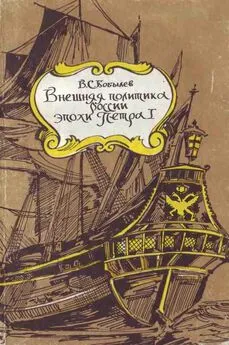

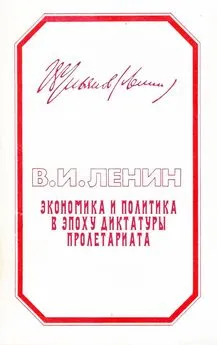
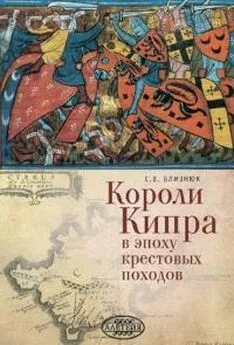
![Игорь Иванов - Внешняя политика России в эпоху глобализации [Статьи и выступления]](/books/1090951/igor-ivanov-vneshnyaya-politika-rossii-v-epohu-globa.webp)
